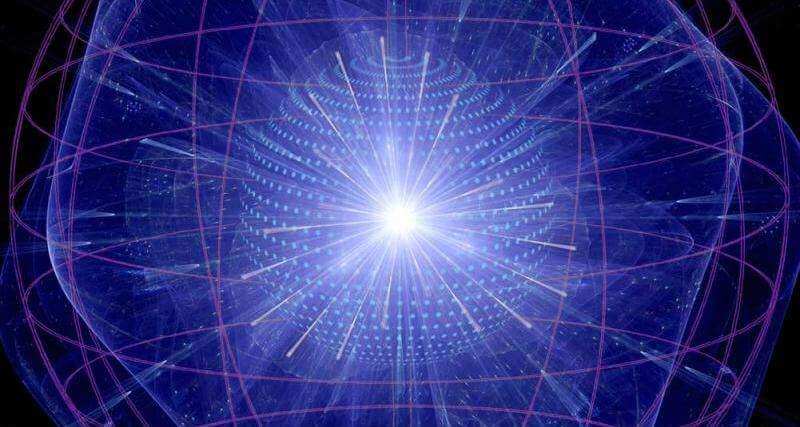- Get link
- X
- Other Apps

Standard cosmology — that is, the Big Bang theory with its early period of exponential growth, known as inflation — is the prevailing scientific model of our Universe, in which a combination of space and time swelled from a very hot and dense point to a homogeneous and ever-expanding expanse. This theory explains the many physical phenomena that we observe. But what if we don't all know about her?
The new theory of physicists at the Brookhaven National Laboratory, the Fermi National Accelerator Laboratory, and Stony Brook University, published on January 18 in Physical Review Letters, allows for a short period of secondary inflation that could explain the calculated amount of dark matter that exists throughout space.
“In general, the fundamental theory of nature can explain some phenomena, but it does not always lead us to the right amount of dark matter,” says Human Davudiasl, head of the high energy theory group at the Brookhaven National Laboratory and author of the work. “If you have too little dark matter, you can suggest another source, but there will be many problems with it.”
Measuring the amount of dark matter in the universe is not an easy task. In the end, it is dark and does not interact with ordinary matter in the usual way. Nevertheless, the gravitational effects of dark matter allow scientists to very accurately estimate its quantity. The best estimates show that it is about a quarter of the mass-energy of the Universe, whereas ordinary matter - of which the stars consist, our planet and we - is only 5%. Dark matter is the predominant form of matter in the Universe, and this forces physicists to develop theories and experiments to study its properties and search for the path of its origin.
Some theories that elegantly explain the strangeness in physics — for example, the excessive weakness of gravity compared to other fundamental interactions, electromagnetic, strong, and weak nuclear forces — cannot be fully accepted because they predict more dark matter than empirical ones show. observations.
This new theory solves this problem. Davudyasl and his colleagues added another step to the generally accepted sequence of the origin of space and time.
In standard cosmology, an exponential expansion of the universe called cosmic inflation begins about 10 ^ -35 seconds after the start of time. The explosive expansion of outer space lasted for a fraction of a second and led to the emergence of a hot Universe, which began to cool and cool to this day. When the age of the Universe was from a few seconds to a minute - that is, it had cooled enough - the formation of light elements began. But between these points there could be other inflation interludes, says Davudyasl.
"They were not exactly as powerful or violent as the initial inflation, but they contributed to the distribution of dark matter," the scientist says.
At the beginning, when temperatures reached billions of degrees in a relatively small amount of space, dark matter particles could collide and annihilate after contact, transferring their energy to the standard constituents of matter particles like electrons and quarks. But as the universe continued to expand and cool, dark matter particles met less and less, and the rate of annihilation could not keep up with the rate of expansion.
“At that moment, an abundance of dark matter was already baked into the cake,” says Davoudasl. - Do not forget that it interacts very weakly. Therefore, annihilation cannot maintain a significant tempo at low temperatures. Self-unification of dark matter becomes ineffective fairly quickly, and the amount of dark matter particles is frozen. ”
However, the weaker the interaction of dark matter, the less effective the annihilation and the greater should be the final abundance of dark matter particles. And since experiments impose ever more stringent restrictions on the strength of dark matter interactions, some of the modern theories come to reassess the amount of dark matter in the Universe. To bring the theory in line with observations, Davudyasl and his colleagues suggested that there was a different inflation period, fueled by interactions in the “hidden segment” of physics. This second period of inflation, softer, is characterized by a rapid increase in volume and was supposed to weaken the abundance of primary particles, potentially leaving the Universe with the dark matter density that we are seeing today.
“It definitely does not fit into the standard cosmology, but you have to admit that the Universe may not fit the standard of things that we have invented,” says the scientist. - However, we were not going to create something complicated. We showed how using a simple model and the presence of a short period of inflation in the early Universe, one could come to the amount of dark matter that we are seeing now. ”
Proving this theory is a completely different matter. Davoudasl says there may be a way to study the weakest interactions between the hidden segment of physics and ordinary matter.
“If this secondary inflation took place, it can be characterized by energies within the reach of experiments on accelerators, such as a collider of relativistic ions (RHIC) and the Large Hadron Collider,” he says. Only time will tell whether the signs of the hidden segment appear in collisions at these colliders or at other experimental installations.
The article is based on materials .
- Get link
- X
- Other Apps
Comments
Post a Comment